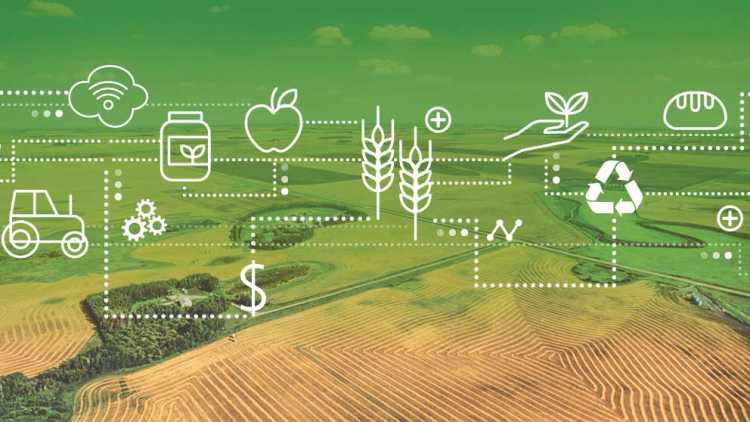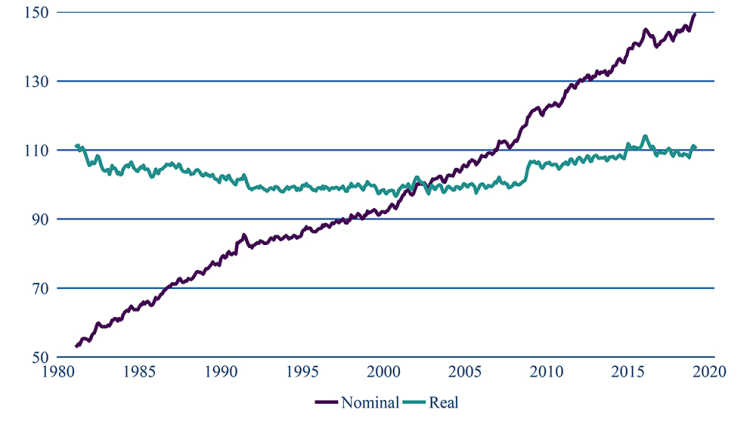How productivity gains affect farm income – part 2

Last week, I argued that productivity gains do not necessarily increase farm income. This week, I show how higher productivity can benefit consumers and what producers can do to stay ahead.
Benefits to consumers
Productivity growth in agriculture is why the world has not fallen in the Malthusian trap, a situation in which population growth exceeds food supply, creating global food shortages. Productivity gains have proven as the most effective means of alleviating world hunger.
Growth in productivity has helped to keep a lid on the rising cost of food. By increasing Canada’s and the rest of the world’s ag output, the per unit cost of the raw materials used in food processing has declined.
Figure 1 shows nominal and real food price indices in Canada. The nominal index captures the actual price of food while the real index accounts for overall price inflation. Nominal food prices have steadily increased over the last 40 years. After adjusting for inflation, today’s prices haven’t changed much since 1980. Given that the world has added more than 3 billion people and that agricultural markets are global, it’s amazing that real food prices have stayed constant. Canadian income has grown but food expenditures have flattened. As such, Canadian households are spending a declining share of their income on food, allowing them to spend more on other goods and services.
Figure 1: Consumer food price index in Canada (2002=100)

Data from Statistics Canada
3 ways farmers can stay ahead
While productivity gains do not always benefit farmers’ income in the long-term, there are a few ways to stay ahead within the changing farm environment.
1. Adopt the latest technology
It means keeping up with continuously evolving technologies and at times, making large, calculated investments. It’s not always economically possible for a farm to be at the technology frontier because it takes years to pay for large productivity enhancing investments. However, it’s possible to remain close. The timing of investments is key to success.
2. Develop new markets
Increasing demand at a large scale requires resources usually exceeding those of a single farm. However, governments and industry stakeholders throughout the supply chain develop new markets by introducing new products (e.g. ethanol in gasoline), boosting demand (e.g. generic advertising) or opening new markets abroad (e.g. trade deals). Gaining access to foreign markets through trade agreements is key to expand the demand for an agricultural commodity.
3. Introduce new products
Profit margins for niche agricultural products can exceed that of generic agricultural commodities. Despite smaller markets, niche products can command price premiums. Producers can capture additional profits by adding value directly at the farm. Value-added products and/or services can increase an operation’s profit margins instead of having that value transferred throughout the supply chain (transformation, storage, distribution, etc.). There is no free lunch. The additional revenues from adding value at the farm come with additional costs.
Article by: Sébastien Pouliot, Principal Economist